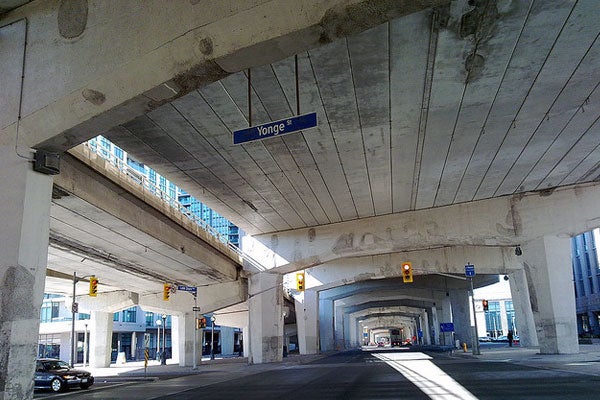
Election fever: what’s money got to do with it?
Published: August 22, 2014
Toronto is abuzz with anticipation of a fall election as candidates ramp up their campaigns to become the mayor of Canada’s largest city.
One of the major issues facing Toronto is a familiar one: how should municipalities raise enough money to deliver services to their residents?
To find out how cities may be changing their finance schemes to accommodate future plans, writer Dominic Ali spoke with Enid Slack, director of the Institute on Municipal Finance and Governance at the University of Toronto’s Munk School of Global Affairs.
What’s the biggest financial challenge facing North American cities such as Toronto?
The biggest challenge facing Toronto and other North American cities is how to pay for infrastructure. A recent report on Toronto’s finances that we released at IMFG suggests that Toronto is fiscally healthy. It balances its operating budget every year which it is required to do by provincial legislation, property taxes per household adjusted for inflation have not increased over the last decade, and it stays well within its self-imposed borrowing limits.
The problem is that Toronto’s infrastructure is very old and needs an injection of funds both to maintain state of good repair but also to build new infrastructure demanded by population growth.
What’s the biggest opportunity for North American cities when it comes to municipal finance?
Cities have the chance to take responsibility for their future. A paper we did at IMFG on the provincial-municipal relationship in Ontario suggested that the province’s fiscal woes will mean there is unlikely to be an increase in provincial funding in the foreseeable future. Cities need to decide what services they want to provide and how they are going to pay for them. It may mean higher taxes but it will also mean services that enhance the quality of life of residents and businesses. But, they need to take control of the own destiny.
How can better finance strategies help improve urban areas?
Cities are engines of economic growth. To achieve their full economic potential, they need to be able to provide a wide range of public services – “hard” services such as water, sewers and roads but also “soft” services such as cultural facilities, parks and libraries that will attract skilled workers.
Better finance strategies allow cities to deliver high quality public services that will attract businesses and residents in a way that does not undermine the city’s competitive advantage. Cities that fail to provide these services will lose their economic advantage.
Is it possible for cities that have gone bankrupt (such as Detroit) to successfully revitalize themselves?
Canadian municipalities are unlikely to face bankruptcy along the lines of what happened in Detroit because of fairly strict provincial borrowing rules and the role of the province in bailing out local governments if it comes to that. Of course, cities can always revitalize themselves but, in Detroit’s case, there are some tough choices that have to be made about cutting expenditures and increasing taxes.
It helps to link taxes to expenditures − better decisions are made about what services to provide and at what level when citizens who benefit from services also pay for them.
Are there any successful new forms of municipal finance that we may one day see in Canada?
Canadian cities rely heavily on the property tax to fund services. They also levy user fees (for services such as transit, water, and garbage collection), and they receive transfers from the federal and provincial governments. But most major cities around the world have other tax sources – taxes on income, sales, fuel, and more. New York City, for example, levies more than 20 different taxes.
I think that cities with a mix of taxes have greater flexibility to respond to local conditions such as changes in the economy, evolving demographics and expenditure needs, changes in the political climate and other factors. A portfolio of taxes also allows cities to achieve revenue growth, revenue stability and equity.
What initially drew you to municipal finance?
I first became interested in municipal finance issues when I was a graduate student in Economics at U of T. It was in the 70s at a time when people were thinking and talking about the importance of cities. Whenever people talk about improvements to the city such as better transit or more affordable housing, the discussion inevitably turns to how we are going to pay for it. That’s what interests me.
———————————————————————————————————————————————————
Interested in learning more about cities and new revenue sources? The Toronto Star's Christopher Hume chats with Enid Slack at one pm August 26, 2014 as part of The Star's Big Ideas live chat series.
Dominic Ali writes about cities for U of T News.



